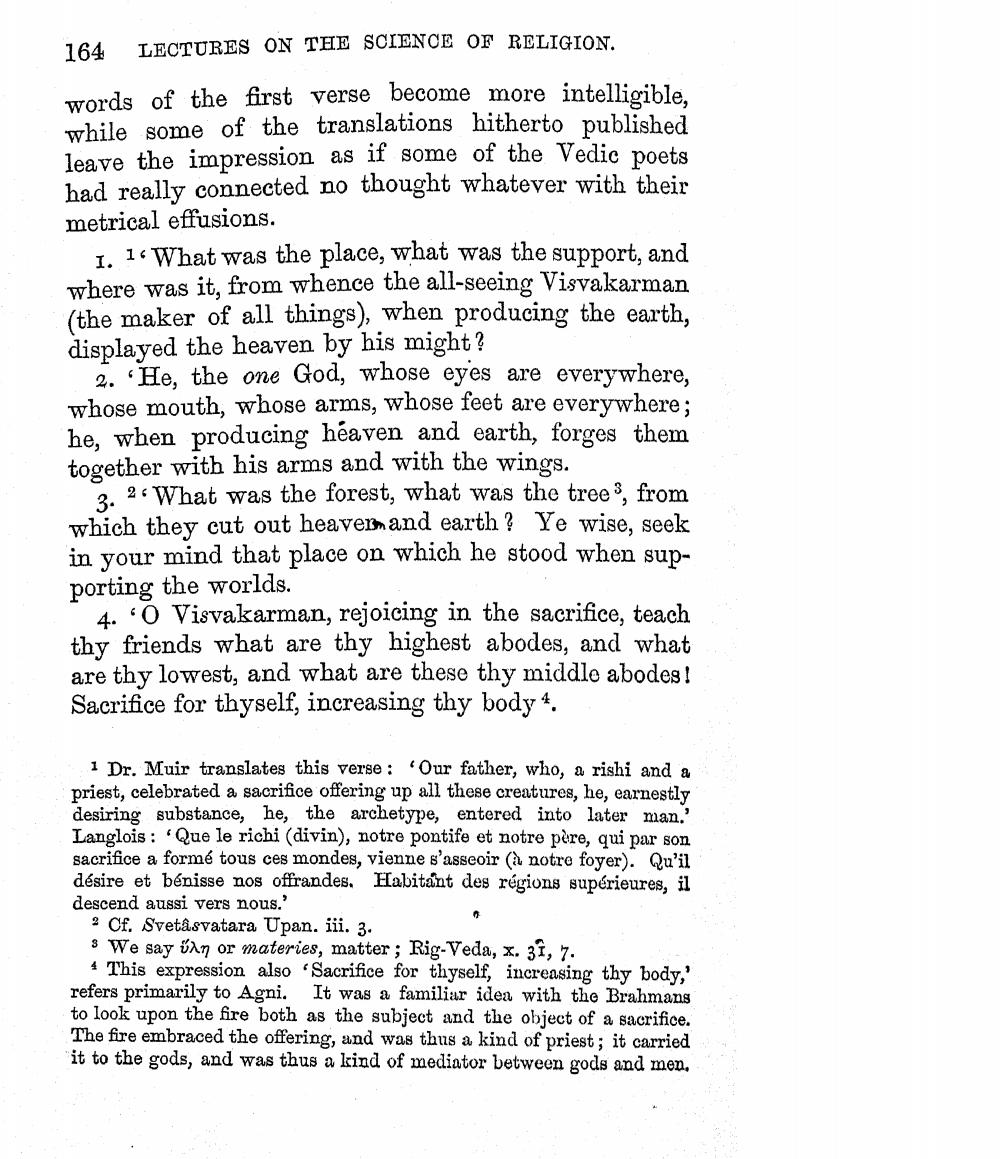________________
164
LECTURES ON THE SCIENCE OF RELIGION.
words of the first verse become more intelligible, while some of the translations hitherto published leave the impression as if some of the Vedic poets had really connected no thought whatever with their metrical effusions.
1. 1 What was the place, what was the support, and where was it, from whence the all-seeing Visvakarman (the maker of all things), when producing the earth, displayed the heaven by his might?
2. He, the one God, whose eyes are everywhere, whose mouth, whose arms, whose feet are everywhere; he, when producing heaven and earth, forges them together with his arms and with the wings.
3. 2. What was the forest, what was the trees, from which they cut out heaver and earth? Ye wise, seek in your mind that place on which he stood when supporting the worlds.
4. O Visvakarman, rejoicing in the sacrifice, teach thy friends what are thy highest abodes, and what are thy lowest, and what are these thy middle abodes! Sacrifice for thyself, increasing thy body *.
1 Dr. Muir translates this verse: 'Our father, who, a rishi and a priest, celebrated a sacrifice offering up all these creatures, he, earnestly desiring substance, he, the archetype, entered into later man.' Langlois Que le richi (divin), notre pontife et notre père, qui par son sacrifice a formé tous ces mondes, vienne s'asseoir (à notre foyer). Qu'il désire et bénisse nos offrandes. Habitant des régions supérieures, il descend aussi vers nous.'
0
2 Cf. Svetasvatara Upan. iii. 3.
3 We say λn or materies, matter; Rig-Veda, x. 31, 7.
4 This expression also 'Sacrifice for thyself, increasing thy body,' refers primarily to Agni. It was a familiar idea with the Brahmans to look upon the fire both as the subject and the object of a sacrifice. The fire embraced the offering, and was thus a kind of priest; it carried it to the gods, and was thus a kind of mediator between gods and men.




